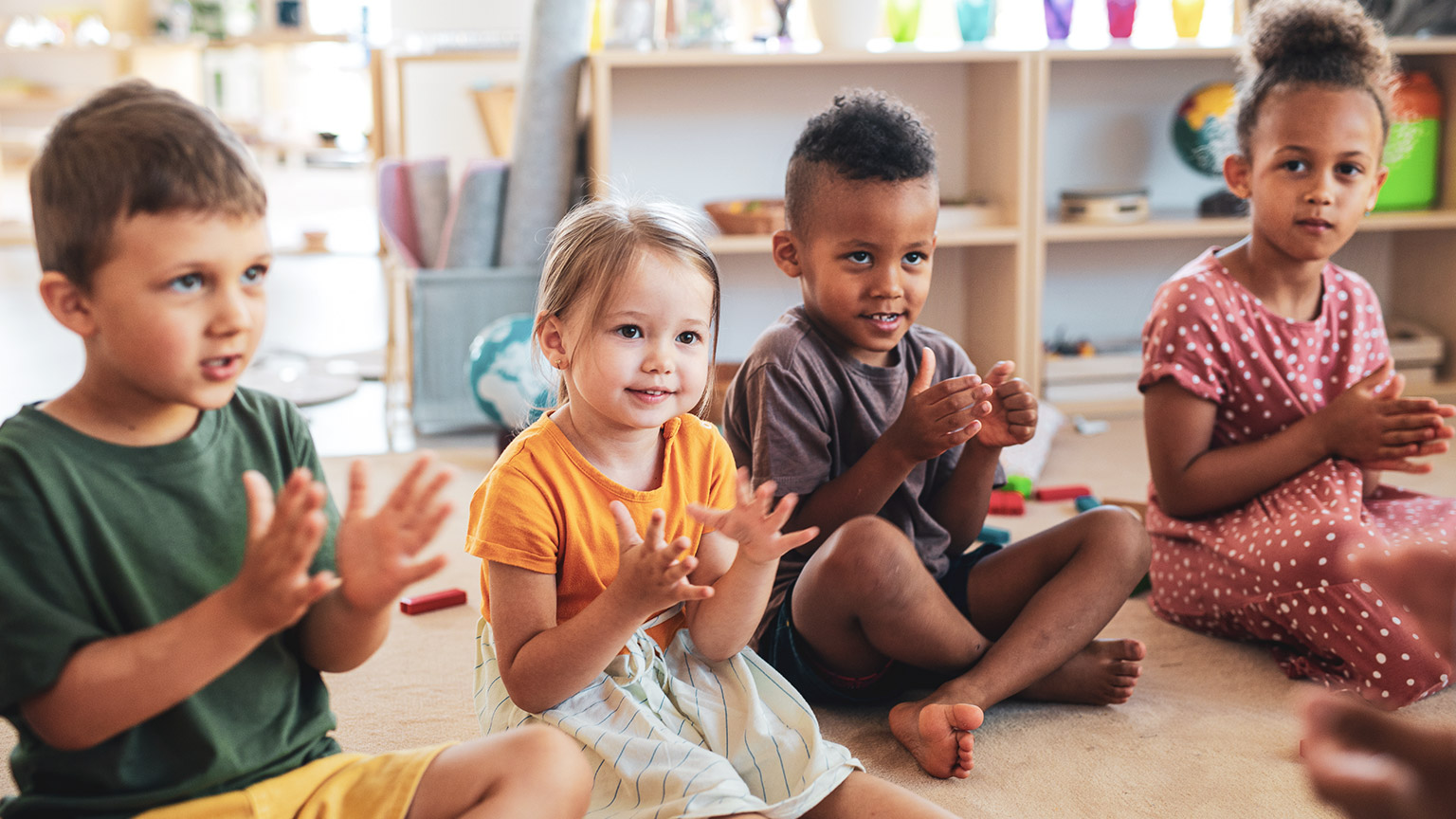Making equitable curriculum decisions ensures that all children are supported to participate in activities. This topic supports understanding inclusion and behaviours within early childhood and education. This includes the framework for fostering positive and respectful behaviour to support the implementation of inclusive practices for children's additional needs and behaviours.
By the end of this topic, you will understand the following:
- Making inclusive and equitable curriculum decisions
- Theory and research regarding inclusion and behaviour
- The impact of current development, culture, personality, temperament, influence, background and experiences on future development
- Beliefs and perspectives regarding inclusion and behaviour
- Guidelines and legislation for inclusion and behaviour.

An inclusive curriculum involves designing and delivering educational services to ensure that every child is included. It guarantees that all children can engage in various learning opportunities and environments. The goal is to address the needs of every child, regardless of their differences. By implementing an inclusive curriculum, all children are given the chance to learn, develop, and thrive.
An inclusive curriculum meets the needs of all learners. It is designed to give all children the same learning opportunities and experiences. An inclusive curriculum ensures that all children can participate in all aspects of education, including the classroom, extracurricular activities, and field trips.
In early childhood education, the term curriculum refers to planned and unplanned daily interactions with children. This can include learning from activities, events, and programs provided to children. Curriculum also refers to the learning experiences that are planned and structured to help develop children's knowledge and skills.
An early childhood service will implement a curriculum with a child-centred learning approach. This means that services see children as capable and valued individuals. They provide activities that enable all children to be included, regardless of any diversity within the group. The focus is on catering for everyone and developing activities and experiences that will benefit all children equally.
Inclusion is the direct act of including all others, incorporating policies, procedures and protocols that devolve equal access and opportunity for all children and their families. Inclusion is not static – it requires action. Services that set the tone for equity, inclusion and diversity consider the fundamental differences between each child in their care (their needs, development, culture and abilities), celebrating each child as a unique individual.
Early Childhood Australia supports three key dimensions required for inclusion into early childhood services:
Access
Inclusion means ensuring that every child has access to early learning. Inclusive access requires early learning services to be set up and organised around a diverse community. Systemic, service, and individual barriers must be overcome to enable inclusive access.
Participation
Inclusion requires meaningful participation. Inclusive early childhood education and care provides programs in which children are recognised as active agents in their learning. Meaningful participation is grounded in the Early Years Learning Framework’s (EYLF) overarching concepts: belonging, being and becoming.
Outcomes
Inclusive early childhood education and care mean that every child experiences positive learning outcomes in the areas identified in the EYLF. Namely, they have a strong sense of identity, are connected with and contribute to their world, have a strong sense of well-being, are confident and involved learners and are effective communicators.
Source: Villegas, T., 2017, July 11, Inclusion, exclusion, segregation and integration: How are they different? Think Inclusive.
In an inclusive classroom, all students feel safe, respected and valued. They have a sense of belonging and feel like they are an essential part of the class. It is about creating an environment where everyone can succeed. Inclusive teaching approaches ensure that all children are accommodated, and stereotypes are avoided.
Watch
Watch these videos to find out more about inclusion:
EYLF Principle 3 – High Expectations and Equity by Starskills
UNESCO Global Education Monitoring (GEM) Report 2020 on Inclusion and Education
Supporting Inclusion
Children with additional needs may benefit from additional supports, services or adaptations to participate in early years services. ACEQCA also notes that additional needs arise from different causes and that causes require different responses. They also identify that any child may have additional needs from time to time.
ACEQCA has defined children who have additional needs in the Guide to the National Quality Framework 2 as children who require or will benefit from specific considerations or adaptations and who:
- are Aboriginals or Torres Strait Islanders
- are recent arrivals in Australia
- have a culturally and linguistically diverse background
- live in isolated geographic locations
- are experiencing difficult family circumstances or stress
- are at risk of abuse or neglect
- are experiencing language and communication difficulties
- have a diagnosed disability—physical, sensory, intellectual or autism spectrum disorder
- have a medical or health condition
- demonstrate challenging behaviours and behavioural or psychological disorders
- have developmental delays
- have learning difficulties
- are gifted or have unique talents
- have other extra support needs.
Other areas that could contribute to the increased support needs of children include:
- Refugee children
- Gender-diverse or gender-fluid children
- Children from lesbian, gay, bisexual, transgender or intersex (LGBTI) families
- Children experiencing social, economic or geographical disadvantage
- Children in institutional settings.
Inclusive curriculum decisions ensure that all activities are available and accessible to all children. Educators will ensure that the right resources, equipment and support are in place.
| Inclusive support | Curriculum Decision |
|---|---|
| Abilities | Plan for the use of additional staff to support learning activities so that children can receive further one-on-one support or be in smaller groups |
| Accessibility | Determine the specific requirements for access, aids, or specialised equipment when curriculum planning |
| Attitude | Ensure all staff provide non-judgemental support and understanding for each child and family’s individual needs and context |
| Emotional support | Ensure that the learning environment is a safe and supportive place for all children |
| Modifications/ adjustments | Make individual modifications or adjustments to allow all children to participate |
| Network | Create collaborative partnerships with others with expertise in inclusion, including other services, professionals and community relationships. |
| Planning | Services develop strategic inclusion plans and individual inclusion plans and strategies to support the inclusion of children with diverse needs |
| Resources | Providing additional support to children with additional needs, such as allocating an inclusion support person to work with the child. Ensuring that the child has a rapport with the support person builds their confidence and skills to join in activities and group work |
| Simplification or extension learning | Can the activity be simplified or extended to suit specific needs? |
| Variety | Provide a wide range of learning opportunities so all children’s needs and interests are considered and met |
Watch
Watch this video to find out more about inclusion:
EYLF Principle 4 – Respect for Diversity by Starskills (10.41 minutes)
Reading
To read more about inclusion, visit Inclusion Fact Sheet from the Professional Support Coordinators Alliance.

The term ‘inclusion’ has been debated and reworded for many years – alternative terms such as mainstream, reverse mainstream and integration programs were commonly used. Literature reviews note the difference in context for each term, with the current consensus being to use the term ‘inclusion’, especially within early childhood programs.
Inclusion primarily means that children with disabilities or additional needs can utilise the same program and environment as typically developing children. These children will have individual plans for their goals and strategies, like all children in early childhood settings.
More recently, further additions to the terminology have been made, stipulating that all children who require more extensive support or considerations than typically developing children may be represented using the term inclusive education.
The University of Melbourne cites diversity statistics within Australia in 2014:
Available research demonstrates evidence of the ups and downs of children with varying needs engaging in inclusive services. Between 1980 and 1990, there was a significant spike in children with disabilities attending early childhood settings because of the social and overall developmental benefits for them. Some children require adaptations to the environment to meet their needs.
The downside the research discovered was that most degree-educated educators were trained primarily to work with and support typically developing children and did not necessarily have the expertise or knowledge to handle children with more complex needs. Early childhood services also lacked daily therapists, such as speech pathologists, occupational therapists, or physiotherapists, often available in specialist schools.&
The diversity in Australian early childhood settings is growing every day. As well as cultural, linguistic and ethnic diversity, there are Australian children that have a disability, meaning that they require assistance with communication, self-care and/or mobility. Other attributes like socioeconomic status, family structure, living conditions and mental, physical and emotional health affect a child’s learning and development trajectories and will affect children in different ways3. Woodhead, 2006
The Importance of the Early Years
Being aware of a child’s sociocultural, socioeconomic and ecological systems and contexts supports educators’ understanding of the impacts of the child’s world (e.g. the child’s experiences, circumstances, family, wider community and culture; and the child’s parents’ parenting methods) on their self-concept, self-esteem, development, strengths, needs and behaviour.
The importance of these insights in early years education and care cannot be overstated. They assist educators in creating effective education and care, where the child is considered holistically, and educators understand where the child has come from and what may impact them. Without inclusion, the research shows, the attempts of the service to meet the different needs of individual children will be ineffective.
Watch
To learn about the importance of a child’s first 1000 days of life, watch the following video.
Reflection
Consider how having early childhood development and support throughout the 1000-day window of opportunity assists children with inclusion and reaching their full potential in brain development and overall development.
Approaches in Child Development
There is a range of theories and perspectives on child development that educators can use to inform their practice. Studies and research have occurred to understand child development and explain how children mature and grow. Theories have been developed to explain what is being observed and why children behave in specific ways. Theories of child development have continued to evolve.
Many child development views arose from views of nature v’s nurture. Early behaviouralist theories (including John Locke, John Watson and B.F. Skinner) saw children develop due to external (or environmental) forces to elicit conditioned responses due to a schedule, reward, or punishment.
Therefore, behaviours arose from nurture by adults to shape the child’s responses. Whilst others believed in nature as the shaping force, where children were intrinsically motivated, learning occurred by a mostly internal process towards development and maturation.
The early theories lead to five broad categories of child development.
| Theory | Description |
|---|---|
| Developmental theory | Based on the developmental psychology of achieving milestones as a child matures and grows |
| Socio-cultural theory | Explains children's development in relation to their community and that community’s belief systems |
| Socio-behavioural theory | Views a child's development as creating knowledge and gathering experiences when interacting with others |
| Critical theories | Promote that the educator thinks critically and challenges practices and assumptions about the learning program |
| Post-structuralist theory | Promotes many ways a child can learn and develop and many perspectives an educator can use to plan work. It sees a balance between many factors, such as the child’s stage of development, their interests and motivation, and the support of caring and committed adults in a well-designed program |
Educators can use elements of different current and emerging theories and research about developing children’s cooperative behaviour to build their practice. Aspects can be selected and used depending on the support they are trying to provide or the problem they are trying to resolve. When supporting behaviour development in children towards encouraging and building cooperative behaviours, educators can use aspects of the socio-behaviouralist theories, which emphasise using experiences to shape the child’s behaviour. Cooperative behaviour includes children working with others, being helpful and showing empathy and care for others. It involves building self-regulation and supporting children to use certain behaviours over others because they will result in better quality relationships and the development of self-discipline.
There is a recognition of the child's developmental stage and selecting techniques that meet their needs at their stage. Building cooperative behaviour is a process of encouraging the child to have agency over their behaviour and to provide a positive environment where they can recognise appropriate behaviour and be reinforced for using it.
Our children are the rock on which our future will be built, our greatest asset as a nation. They will be the leaders of our country, the creators of our national wealth who care for and protect our people. Nelson Mandela4, 1995
Piaget's Cognitive Development Theory
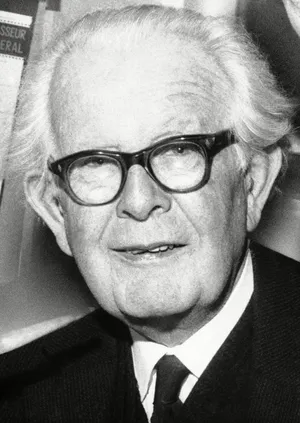 |
Jean Piaget’s theory of cognitive development asserts that learning is largely based on concepts such as:
This theory falls under the category of developmental theories explaining child development, where children pass through predictable and age-based stages of development. Each stage was a milestone that a child would reach as they grew and matured and was characterised by different behaviours for each stage of development. Piaget stated that children need to be taught in line with all of these concepts, along with pre-existing schemas, according to their individual development and development of the cognitive ‘tools’ required for learning. This is achieved through a person’s thinking and reasoning processes. However, what if a child processes information and learns differently than typically developing children? |
Watch
Watch this video to learn more about Piaget’s theory:
Maslow’s Hierarchy of Needs
Maslow's Hierarchy of Needs is a psychology theory that applies to education. It identifies five stages of human needs that motivate our behaviour. Needs are in order of importance, with immediate needs being met before others can be satisfied. Children are less likely to be successful learners when their basic needs are unmet. Children’s needs can be examined against the hierarchy to identify gaps; for example, breakfast may be provided for children who arrive hungry.
Self-fulfillment needs
- Self-actualisation: achieving one's full potential, including creative activities
Psychological needs
- Esteem needs: prestige, feeling of accomplishment
- Belongingness and love needs: intimate relationships, friends
Basic needs
- Safety needs: security, safety
- Physiological needs: food, water, warmth, rest
Watch
To learn about Maslow’s hierarchy of needs, watch the video:
Bowen’s Family Systems Theory
This theory is in the category of the socio-cultural view of child development. It recognises the importance of the family unit to a child’s behaviour and development. The child is seen in the context of interactions and relationships with family members. To understand the child, they need to be viewed as a part of the family they are connected to as the family is the affecting factor to the person's life. Each member of the family system is attached and connected to the other members, and none can be viewed in isolation from the whole system.
Watch
Watch this clip to learn more about the family systems theory:
Practice
Explain how the family systems theory supports understanding differences between families, especially those culturally diverse, from a minority group, or marginalised community.
Ensure that you keep notes for future reference, as this information will support your assessments and professional practice.
Bronfenbrenner’s Ecological Social Systems
Bronfenbrenner’s theory links to the category of child development theories in the socio-cultural category. He focuses on children's relationships in many environments and how these link to the child. He sees child development within a complex system of relationships affected by multiple levels of the surrounding environment, from the immediate and most influential settings of family and school to broad cultural values, laws, and customs. The interaction within these environments becomes more complex as a child develops and matures.
In education, children’s development should be seen through the lens of the child and their immediate environment, and also consider the interaction and influence of the larger environment.
- Individual: This refers to the child at the centre of the theory, including their personal characteristics, such as age, gender, temperament, and genetic predispositions. These individual traits influence how they interact with their environments and respond to various experiences.
- Microsystem: The microsystem consists of the immediate environments in which a child interacts directly, such as family, school, peers, and neighbourhood. These settings have a direct impact on the child’s development. For example, nurturing family relationships can promote emotional well-being, while supportive teachers can enhance academic success.
- Mesosystem:The mesosystem represents the connections between different microsystems. It focuses on how interactions between these environments affect the child. For instance, communication between a child's parents and teachers can support learning and behaviour, while conflicts between home and school environments can create challenges.
- Exosystem: The exosystem includes external environmental factors that indirectly influence the child’s development, even though the child does not directly interact with them. This can include parents' workplaces, community services, or social networks. For example, a parent's job loss may affect family stability, impacting the child's emotional well-being.
- Macrosystem: The macrosystem encompasses the broader cultural and societal influences that shape the child’s environment, including laws, customs, and economic conditions. It reflects the values and beliefs of the larger society and can affect all other systems. For instance, cultural attitudes toward education or family structures can influence how children are raised and educated.
These layers illustrate how various factors interact to influence a child's development within their environment.
Reading
Learn more about Bronfenbrenner’s ecological systems theory: Bronfenbrenner’s Ecological Systems Theory from Simply Psychology.
Watch
To learn more about Bronfenbrenner’s ecological systems theory, by watching the video Ecological Systems Theory by Odyssey Institute:
Practice
Impacts of Ecological Systems on Children with Additional Needs
Consider how the microsystem, mesosystem, ecosystem and macrosystem could impact educators, service programs and children who may require support or inclusion adaptions. For example, the microsystem and mesosystem could impact children’s social interactions.
Ensure that you keep notes for future reference, as this information will support your assessments and professional practice.
Attachment Theory
John Bowlby’s view is that attachment styles of children form arise from their early interactions with caregivers. The attachment style comes from a continuum of emotion regulation, with anxious-avoidant attachment at one end and anxious-resistant at the other. Secure attachment falls at the midpoint of this spectrum between overly organised strategies for controlling and minimising emotions and uncontrolled, disorganised, and ineffectively managed emotions.
Reading
Read the following articles to learn about Bowlby’s attachment theory and the Circle of Security: Bowlby’s Attachment Theory from Simply Psychology.
What Is the Circle of Security from Circle of Security International.
Watch
Watch the video to learn about Bowlby’s attachment theory: Four Stages of Attachment (John Bowlby) by Psychology Unlocked:
Erik Erikson
Erikson proposed eight stages of development, each characterised by a central conflict that individuals must resolve to progress healthily to the next stage. For children, the first five stages are particularly relevant, as they cover critical aspects of their behaviour and social interactions.
| Trust vs. Mistrust (Infancy: 0-1 year) | In this stage, infants learn to trust their caregivers based on the consistency and quality of care they receive. Successful resolution leads to a sense of security, which is foundational for future relationships. If caregivers are unreliable, mistrust develops, affecting social behaviour later on. |
|---|---|
| Autonomy vs. Shame and Doubt (Early Childhood: 1-3 years) | Children begin to assert independence, explore their environment and make choices. Encouragement leads to autonomy, fostering self-confidence and initiative. Conversely, overly critical or controlling caregivers may induce shame and doubt, hindering cooperative behaviour and self-esteem. |
| Initiative vs. Guilt (Preschool Age: 3-6 years) | At this stage, children assert control and power over their environment by initiating activities. Successful navigation fosters a sense of initiative, leading to confidence in leadership and cooperative interactions with peers. If children are discouraged or punished for their initiatives, they may develop guilt, affecting their willingness to engage with others. |
| Industry vs. Inferiority (School Age: 6-12 years) | In this stage, children work to develop a sense of competence through school and social interactions. Positive reinforcement and achievement build a sense of industry, leading to cooperation and teamwork skills. Failure or constant criticism can lead to feelings of inferiority, making children less likely to engage with peers constructively. |
| Identity vs. Role Confusion (Adolescence: 12-18 years) | While this stage primarily concerns older children and adolescents, the foundations for identity are laid earlier. Children start to explore their personal identity, which influences their social behaviours and peer relationships. A strong sense of identity promotes healthy interactions and cooperation, while confusion can lead to social withdrawal or conflict. |
Erikson's theory underscores that children's behaviour is deeply influenced by their developmental stage:
- Social Interaction: Each stage shapes how children interact with peers and adults. Successful resolution of conflicts fosters social skills, cooperation, and a positive self-image.
- Emotional Development: The emotional security established in the early stages informs children's ability to form relationships, trust others, and collaborate with peers.
- Conflict Resolution: Learning to navigate conflicts during these stages is crucial for developing cooperative behaviour. Children who learn to manage their feelings and relationships are better equipped to work collaboratively.
Supportive Interventions
To foster healthy development in line with Erikson’s stages, caregivers and educators can:
- Provide Consistent Care: Establishing a nurturing environment helps build trust in infants and toddlers.
- Encourage Independence: Allowing children to make choices and explore fosters autonomy.
- Support Initiative: Encourage creativity and initiative in young children without harsh criticism.
- Reinforce Competence: Praise efforts and achievements to build industry and a sense of competence.
- Facilitate Identity Exploration: Create safe spaces for older children to explore their identities and social roles.
Erikson’s theory provides valuable insights into how children develop cooperative behavior through the resolution of psychosocial conflicts at each developmental stage. Understanding these dynamics can guide effective parenting and educational practices, promoting healthier social interactions and emotional well-being.
Watch
Albert Bandura
Albert Bandura’s social learning theory is a foundational framework for understanding how children learn behaviours, including cooperation, through observation and interaction within their environments. Bandura emphasised the importance of modelling, imitation, and reinforcement in shaping behaviours, proposing that much of human behaviour is learned observationally through modelling.
Key Concepts of Bandura’s Theory
1. Observational Learning: Children learn behaviours by watching others, particularly role models such as parents, teachers, and peers. When children observe cooperative behaviours being rewarded, they are more likely to imitate those behaviours.
2. Attention, Retention, Reproduction, and Motivation: For observational learning to occur, four processes are essential:
- Attention: The learner must pay attention to the model's behaviour.
- Retention: The learner must be able to remember the behaviour once they see it.
- Reproduction: The learner must have the ability to reproduce the observed behaviour.
- Motivation: The learner must desire to imitate the behaviour, often influenced by observed rewards or punishments.
3. Self-Efficacy: Bandura introduced the concept of self-efficacy, the belief in one's capabilities to execute behaviours necessary to produce specific performance attainments. High self-efficacy can encourage children to take the initiative and engage in cooperative behaviours.
Bandura's theory highlights several aspects of children's behaviour regarding cooperation:
- Modelling Cooperative Behavior: Children are likely to imitate cooperative behaviours observed in trusted adults and peers. For example, if a parent models sharing and teamwork, children are more likely to adopt those behaviours in their interactions.
- Reinforcement and Punishment: Positive reinforcement (e.g., praise for sharing) encourages children to repeat cooperative actions, while negative consequences (e.g., reprimanding for aggressive behaviour) can discourage non-cooperative actions.
- Development of Social Skills: Through observational learning, children acquire essential social skills, such as empathy, negotiation, and conflict resolution, which are crucial for effective cooperation.
Caregivers and educators can try several strategies to help children develop cooperative behaviour using Bandura’s ideas. First, adults should model positive behaviours by showing how to share, take turns, and solve problems together. Creating a supportive environment where cooperation is valued and rewarded is also important. This can be done by using positive reinforcement to encourage good behaviours.
Engaging children in group activities is another great way to promote cooperation. When kids work together on tasks, they can practice teamwork and learn from each other. Additionally, fostering self-efficacy is key; caregivers should encourage children to set realistic goals and celebrate their achievements, helping them feel more confident in their ability to work with others.
Watch
Post-structuralist Theories
Theorists such as Foucault, Bourdieu and Canella believe that a child has many ways to learn. Therefore, educators are asked to have a range of methods to promote learning and program development. They see children as having agency and can influence their own lives rather than having teacher-led experiences that the sociocultural theorists believed. Holistic approaches are supported by the National Quality Framework (NQF) within the approved learning frameworks, which were created using empirical research and theory. Holistic approaches build and utilise practices that embrace each child as an individual and focus on strengths-based strategies while supporting and getting to know the child as a whole, aiding the creation of environments that support all children.
Educators’ roles will be affected by their own experiences and perspective, such as:
| Contrasting beliefs | Differing perspectives on child behaviour |
|---|---|
| An educator’s experiences and background influence their views about acceptable behaviours and how to support challenging ones. Also, their expectations, mood and reactions may contrast with the service’s guided approach to building considerate behaviour in children. | Various families and cultures will view behaviour and behaviour support based on personal values, beliefs and expectations. Variations in culture can mean that children do not know what is expected of them in situations unfamiliar to their culture. For example, demanding a child from an Aboriginal background looks you in the eyes when responding to questioning is not appropriate. In their culture, it is a mark of respect to not make eye contact and look down when spoken to by an elder. |
Watch
Watch the following video by Childcare Experts (2020) on Guiding Children’s Behaviours and the role educators have:
Supportive interventions (positive and sensitive supports by nurturing adults) promote acceptable expectations for children’s behaviour. They guide and help children self-regulate, teaching them to be considerate of others (i.e., thinking about the effect their behaviour/actions have on others) instead of using reward and punishment as a means of control.
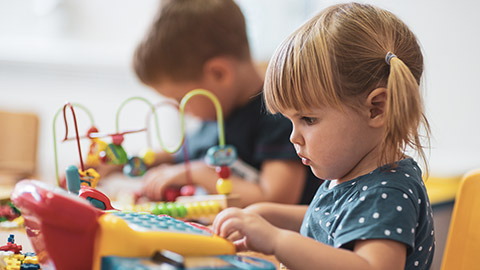
The reasons many children require inclusion support are often associated with the child’s biological development. Contributing factors include genetic inheritance, complications from pregnancy or birth, or differences in language and experience, which create linguistic, cultural and social barriers and challenges for children. These factors may cause challenges for children’s ability to interact positively and engage in the curriculum.
Culture
Cultural values and beliefs can impact children in various ways. For example, they can shape how a child behaves, interprets, interacts with the world, and understands expectations. They can also significantly impact a child’s emotional and social development, understanding of social expectations and behaviours, and perception of themselves, including their self-concept and self-esteem.
Watch
Watch this video to learn more about how culture impacts development: What Is the Most Important Influence on Child Development by Tom Weisner from TEDx Talks:
Reading
Read these articles to learn about the impacts on language and literacy acquisition in children:
- Literacy as an Outcome of Language Development and Its Impact on Children’s Psychosocial and Emotional development from the Encyclopedia on Early Childhood Development.
- Language Development in Children from Child Development Institute.
- Language development and literacy resources from the Encyclopedia on Early Childhood Development.
Practice
Belief Systems
Identify THREE (3) behaviours that may be socially acceptable in one society but not another.
- List the behaviours and societies. Why do you believe these societies have these beliefs and systems in place?
- Record your answer. Try to consider this without your judgement or bias.
Ensure that you keep notes for future reference, as this information will support your assessments and professional practice.
Development
The term normal has long been debated in the early years of development, with many professionals reluctant to use the term. However, others acknowledge that normal is simply a baseline from which to work, helping professionals understand which concerns need addressing and when support may be required.
The phrase ‘there is no normal’ is often used by many within the early childhood education and care industry who consider developmental context and holistic approaches essential in assessing a child’s learning and development. Tick-box assessments that label children too restrictively are viewed as unhelpful. For example, in assessing a child who cannot read or write from a culture that teaches its children survival skills (such as hunting, navigating and building self-sufficiency), you would use a different approach compared to a child from a typical urban environment. It would be difficult and unethical to judge which developmental path is better or which child is within the norms of developmental progress.
Within an early childhood education and care service, the staff must understand how each child learns and whether a child needs support or assistance in line with the service program and curriculum. They must also understand how to meet each child’s developmental needs and which strategies support the formation of functional, academic and everyday-living skills.
There may be times when educators need to review the brain and biopsychosocial development of children who have experienced trauma, attachment difficulties and similar emotional regressions. Educators must understand where to start the learning process, as it may not be aligned with the milestone for the child’s age range. Theories such as Maslow’s hierarchy of needs and Erikson’s psychosocial theory may be used as context for the child’s feelings towards trust and their autonomy, safety, security and belonging.
Reading
Learn more about how developmental disabilities affect learning: Learning and Developmental Disabilities Research and Resources from Collaborative on Health and the Environment.
Watch
Watch this video to learn about toxins’ effect on developing brains: Little Things Matter: The Impact of Toxins on the Developing Brain by Power Of Prevention:
‘Disability’ is a general term that is often considered as incorporating three components:
- Impairment – which refers to body functions (for example, sensory or cognitive functions) and body structures (for example, organ or limb functions)
- Activity limitations – which refer to the challenges of carrying out daily activities such as self-care, mobility and learning
- Participation restrictions – are experienced as the child endeavours to participate within the family and community settings.
Practice
Assessing Development
Read the following case studies and use the tools found at the links provided to answer the related questions:
Kalani -Kalani, four and a half years old, has just been diagnosed with a sensory processing disorder. So you had an idea that there were sensory challenges in play because of Kalani’s overreactions (hypersensitivity) to various sensations such as certain foods, water play and painting.
Use the occupational therapist checklist for sensory processing disorder at the following link to help you identify which developmental areas these observations may fall into:
Sensory Processing Disorder Checklist from The OT Toolbox.
Then answer the following questions:
- What questions might you ask Kalani’s occupational therapist regarding recognising sensory processing disorder?
- Looking at the checklist, how might you support inclusive practices for Kalani?
Jonas -Jonas is also four and a half years old. He has a somewhat limited vocabulary (primarily nouns) and rarely speaks. Without the support of language, Jonas manages social situations in two ways. Depending on the time of day, his mood and the dynamics of the play environment, he either runs away and plays alone or inflicts aggressive behaviours, such as pushing, snatching and hitting on others. His parents do not seem concerned, as he is their only male child and is heavily facilitated at all times, needing minimal language to communicate his needs.
Read about developmental milestones in this link to assist with your answers to this scenario:
Early Years Learning Framework Practice-Based Resources – Developmental Milestones by the Australian Children’s Education and Care Quality Authority (ACECQA).
Use the information from the link to help you answer the following questions about Jonas:
- Does Jonas meet the developmental expectations for his age? If not, to which age is he closest developmentally?
- How could you support improving his development?
- How could you discover his strengths?
- How could you find out more about his holistic development in the context of his sociocultural
- world?
- Will you potentially require additional support for his inclusion? If so, what kind of additional support?
Ensure that you keep notes for future reference, as this information will support your assessments and professional practice.
Personality and Temperament

Their unique personality and temperament can heavily impact a child's development.
Personalities are made up of a unique set of attributes. Some attributes, such as shyness, humour, empathy, aggression and sociability, are genetically determined; others are influenced by experience and environment, including the person’s family, culture and community. However, children can have personalities that do not appear to reflect their upbringing, such as a loud, social child stemming from two shy, mild-mannered, introverted parents.
A person’s temperament is how they react to their world. Temperaments are typically determined genetically and are relatively unaffected by outside influences. Many factors make up a person’s temperament, but generally, the following three categories are the most helpful when considering a child’s temperament:
- Reactivity – how the child reacts to different situations in their world (e.g., events, change, social situations, challenges)
- Self-regulation – how much the child is in control of their emotions and behaviour (e.g., persistence, dedication, focus)
- Sociability – how comfortable or likely the child is to engage in their social world (e.g., new people, new experiences)
Other helpful factors to consider are a child’s general mood, irritability, activity level and adaptability.
Reading
Read the following article to learn about the impact of temperament on development: The Impact of Temperament on Child Development: Comments on Rothbart, Eisenberg, Kagan, and Schermerhorn and Bates.
Psychologists determined that there are three major types of temperament. However, about 40% of babies have been found to have a combination of the types and cannot be ‘boxed’ into one type.
The types of temperament are:
- Easy – Studies have found that around 40% of babies fall into the ‘easy’ category. ‘Easy’ babies adapt quickly to different situations and people. They typically have regular routines and patterns, such as sleeping patterns, and generally, they positively affect mood.
- Slow to warm up – Between 5% and 15% of babies are described as slow to warm up, meaning it takes them some time to adjust to new people and places – they may withdraw, have a lower activity level and display more negative moods. Many see these babies as shy and sensitive and, therefore, more easily affected by their environment.
- Difficult – Many debate the negative connotations of labelling a baby as ‘difficult’. These children quickly withdraw from or negatively react to new environments and situations. They usually have irregular patterns and routines, and their reactions are intense. These babies often cry but are frequently regarded as assertive and persistent. Studies show they represent around 10% of babies.
Reading
Visit this link to learn more about temperament and how different characteristics are affected by each type of temperament: Temperament from SickKids.
Watch
Watch these videos to learn more about temperament:
Temperament by Zero to Three.
Understanding Temperament (child mental health) by Standing in the Gap.
Practice
Temparament
Part 1
Research how the ancient Greeks used to categorise temperament and define the following ancient Greek categories:
- Choleric
- Melancholic
- Phlegmatic
- Sanguine
Consider how these categories and perspectives can help our modern-day understanding of temperament.
Ensure that you keep notes for future reference, as this information will support your assessments and professional practice.
Part 2
Research and describe the link between psychiatric disorders and temperaments.
Parenting Styles

In the mid-1960s, Diana Baumrind identified four main parenting styles by observing many children and families over time:
- Authoritarian
- Authoritative
- Permissive
- Uninvolved
These parenting styles are still recognised today and are considered an influence on the behaviours and temperaments of children. Many debate this concept, though, especially in cultural contexts. For example, in some cultures, such as in some African communities, no adverse outcomes are associated with an authoritarian parenting style.
The requirements for the four parenting styles are detailed in the following table:
| Four Parenting Styles | Supportive (Parent is accepting and child-centred) |
Unsupportive (Parent is not accepting and parent centred) |
| Demanding (Expects much of the child) |
Authoritative parenting: Parents set appropriate limits and boundaries. Relationships are reciprocal and responsive and have high levels of communication and explanation. |
Authoritarian parenting: Parents are controlling, power assertive, lacking warmth, and do not engage much in explanatory communication. |
| Undemanding (Expects little of the child) |
Permissive parenting: Parents are indulgent and reluctant to exert control. |
Uninvolved parenting: Parents reject or neglect the child and have no control. |
Reading
Learn more about Baumrind’s parenting styles at the following link: 4 Types of Parenting Styles and Their Effects from Parenting for Brain.
To learn more about temperament, read the following article and its related articles at the following link: The Nine Traits of Temperament from Michigan State University.
Reflection
Consider how the different parenting styles could impact and influence the development and temperament of a child.
Watch some of your favourite movies involving families and try to observe which parenting style the child in the film is experiencing. For example, in the Harry Potter movies, Harry’s Aunt and Uncle demonstrate uninvolved parenting when it involves Harry, but what parenting style do they direct towards Dudley? Does Mufasa use an authoritative or authoritarian parent style in The Lion King? In Maleficent, what parenting style does Maleficent utilise with Aurora? In these stories, what do you observe in the child that reflects the parenting style they are seeing?
The Child’s Experiences
One child's experiences will never be precisely the same as another; even siblings’ experiences may be quite different. Nevertheless, each child’s experiences in life significantly impact their lifelong learning and development.
There is a large number of negative experiences that may have detrimental effects on the way a child understands and approaches the world. However, many positive experiences, such as owning pets, exploring nature and going on holidays, can inspire and assist children in understanding their world.
Case Study

The following are example statements about how a particular childhood experience affected the person’s life:
When I was eight years old, we went to see my cousin off at the airport as she was backpacking overseas. When she returned, she showed me all the photos of her adventure worldwide. I was in awe. I was interested in geography and different people and places from that moment. Before that, I didn’t think I knew that other countries existed.
When I was four years old, my older brother started school. He loved going to school so much and even came home with homework sometimes. Before I knew it, he could read and write – I thought he was so clever and amazing. I couldn’t wait to start school too, so I began ‘writing’ in notebooks, scribbling my ideas and attempting to do maths. I wanted to go to school more than anything.
When I was young, we had a bushfire in our area—it was big and sudden. My parents were scared and didn’t know what to do because there was no way out of the fire. It was hot and smoky, and there was lots of panic and screaming. Our grandma lived down the street, so we went to make sure she was okay, but she wasn’t there. My mum took us to the nearby river for safety—where the rest of the town was—but grandma wasn’t there either. So my father went to look for her. After that, we never saw him or my grandma again. After that, I was afraid to leave my family and would become stressed and upset if they went anywhere without me. I couldn’t even start school, as I couldn’t leave my family.
Children who have experienced prolonged trauma, a single highly traumatic episode or intense or frequent trauma may be impacted in many ways. The concept of trauma is not new. It can create gaps in predeveloped areas and abilities or may ‘stall’ areas and abilities yet to be developed. Maslow regards most trauma as an experience of shock and loss of safety, which affects the lower levels of the hierarchy of needs and destabilises the upper levels.
Watch
Learn about childhood trauma and the brain by watching this video: Childhood Trauma and the Brain - UK Trauma Council by Anna Freud NCCF.
Adverse Childhood Experiences (ACEs) are negative experiences or trauma in childhood. ACEs can impact a child’s entire life, especially their learning. This can also occur through intergenerational trauma, which can biologically predetermine a child to inherit traumas from their biological parents.
Reading
Visit these links to learn more about the impact of trauma in childhood and intergenerational trauma in Aboriginal communities:
Adverse Childhood Experiences (ACEs) from the Centers for Disease Control and Prevention.
The Impacts of Intergenerational Trauma from Victim Support Service.
The four types of trauma are as follows:
- Type 1 – When a traumatic event happens once and then stops (e.g. a car accident)
- Type 2 – When a traumatic event happened several times in the past but stopped (e.g. physical and sexual abuse and parental abandonment)
- Type 3 – When a traumatic event continues to happen and does not stop (e.g. discrimination and racism)
- Type 4– When there is cumulative trauma, consisting of the effects of different types of victimisation and trauma
Watch
Watch these videos to learn more about trauma and its impact:
Bessel van der Kolk on the Treatment of Trauma: How Childhood Trauma Is Different From PTSD by NICABM.
Dr Gabor Mate on the Misunderstanding of Trauma by Society and the Medical Industry by Jose Aguirr.
Practice
Condtioning and Learning
Research the following theories and complete the associated task:
Pavlov’s classical conditioning
List TWO examples of how a child's experiences consistently can lead to a predictable outcome.
Skinner’s operant conditioning
List TWO examples of how a child experiencing either reward or punishment for particular behaviour can have the behaviour either reinforced or prevented.
Bandura’s observational or social learning theory
List TWO examples of how children learn by observing and imitating the behaviours of others.
Ensure that you keep notes for future reference, as this information will support your assessments and professional practice.
Contributing Factors to Behaviours
In addition to what has already been discussed, consider the following factors that can challenge children’s ability to interact positively:
| Actions of others | Children will react to others in their environment. While developing social skills, they may struggle to understand the nuances of social interactions and respond inappropriately. |
|---|---|
| Child’s need for agency | Children seek, at various stages of development, to exert independence, experiment with decision-making and express likes, dislikes, opinions, ideas and suggestions. Their voice needs to be heard to have an increased agency over their needs and environment. |
| Child’s history | Individual circumstances can influence behaviours. Even though a child reacts in ways that may be interpreted as inappropriate, they may use behaviour as a coping mechanism. Information about the child’s history can provide a clear picture of their needs and areas of development. |
| Consistency | Support provided to children and expectations about their behaviours must be consistent, predictable and constant. Confidence and agency are fostered when they can respond in consistently modelled and supported ways. |
| Culture | A child’s cultural practices and beliefs at home and in their community might clash with the practices of the service. The service may not be inclusive in supporting the child’s culture or understanding the family’s child-rearing practices. Depending on the child’s cultural background, attitudes towards behaviours can vary. |
| The curriculum, practices or the service’s environment | Children feel more secure and exhibit fewer challenging behaviours when a service has a clear, predictable curriculum, practices and environments. |
| Group dynamics | A child may react negatively to the dynamics in a group if it is too large, too loud or has insufficient structure. |
| Illness | Children may exhibit more behaviours as they struggle to manage pain and discomfort, such as increased crying, tantrums or other behaviours indicating suffering. |
| Needs not being met | Most behaviours and challenges to cooperative behaviour can result from unmet needs. Each unmet need can cause a behavioural response that is attempting to communicate it. |
| No sense of belonging | A child feels valued, and belonging is a critical element of the EYLF and the quality standards. Children who do not feel secure and accepted will exhibit higher levels of challenging behaviours and lower self-esteem. Learning outcomes are also reduced. |
| Partnerships with families | Lack of collaboration with families can harm children’s confidence in the service and negatively impact needed information and agreement about their care. |
| Personality | Each child will be unique and have strengths, capabilities and interests that make up their personality, influencing how they react in social situations and learning opportunities. |
| Recent and current events | Children will naturally react to events that occur to them or around them. These can influence their sense of self, and behaviours might result while they are trying to make sense of them. |
| Sensory input | The child may react to various sensory stimuli, such as being too hot, cold, or thirsty, or the environment might be too noisy or having too much light. |
| Group size | Children may react depending on the size of a group, their social skill development or their current state. Making decisions about the group size to suit children’s needs can assist with learning. A large, loud, energetic group can trigger a child's sensory overload and behavioural reaction. Monitor children and make adjustments as needed to avoid adverse reactions. |
| Stage of development | Stages of development will dictate developmental responses to situations. Self-regulation will develop over time as a child develops. A child with a developmental delay may impact their social and emotional development. |
| Temperament and attachment | Temperament is unique. Some children have the capacity for stress, and others find it overwhelming. Similarly, a child’s attachment levels can be healthy and linked to developmental stages. A child might experience normal levels of attachment to a parent and low levels to educators, which may trigger behavioural outbursts. |
There are many different views on and beliefs about inclusive practices, additional needs and behaviours in children. These differences can be due to the individual’s education and knowledge of the topics and personal experiences and expectations (either social or cultural).
Educators must become advocates for children and their unique needs and behaviours. To do this, educators must critically reflect on their biases, judgements and perceptions, constantly working towards an anti-bias approach to service curriculum.
Bias and Judgement

A bias is when a person has prejudice either for or against a particular person or group, and they naturally sway towards their preference, for example, an educator who spends more time with typically developing children than children with additional needs of one sort or another.
Biases can be learnt – for example, your father and mother both felt strongly that children with additional needs should be in a ‘special school’ – or individually developed over time. Many people form bias typically through their own experiences and belief systems. This can be because they have preconceived ideas about or do not understand the particular person or group.
The first step to achieving an anti-bias approach is to be aware of your biases and how they may affect your role and quality of care and the children in your care.
Consider whether the child or their family is triggering your bias. What has created this bias within you, and why do you feel uncomfortable with the child or their family?
Reading
Read about cognitive biases: 15 Cognitive Biases Which Influence the Way You Think from TeacherToolkit.
Watch
This video by Valerie Alexander from TEDx can help you learn to overcome your unconscious bias.
Expectations
In early childhood, many families have expectations for their children and how a service will support them. These expectations may concern:
- How much and what should their child eat
- What should the service be doing to engage learning
- When their child should be toilet trained
- Use of dummies or other comfort items
- Who should their child befriend
- How much time their child spends engaging in art projects
- How their child should behave.
Understanding a family’s expectations early on is essential to find common ground for supporting and educating their child. This helps clarify misunderstandings about what is possible within the service and what the family expects or requests from it. It can also clarify the expectations for the service to meet the requirements of legislation, policy and best practice.
Influence of Educators' Values and Perspectives on Behaviour
Educators play a crucial role in shaping children's behaviour and development, and their personal values and experiences significantly influence how they perceive and respond to various behaviours in the classroom. These individual beliefs can affect interpretations of children's actions, guiding how educators approach situations, establish classroom rules, and foster an inclusive learning environment. Understanding this influence is vital for effective teaching and building positive relationships with students
An educator’s values and experiences shape their perspectives on behaviour in numerous ways. For instance, an educator who values inclusivity may be more attuned to the needs of diverse learners and recognise behaviours stemming from cultural differences. Conversely, if an educator has had limited exposure to certain backgrounds, they may misinterpret behaviours based on their own cultural lens, potentially leading to biased responses.
Case Study
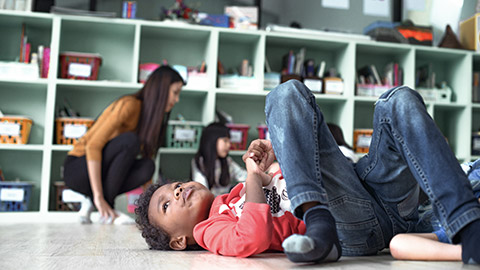
In a preschool classroom, a child named Leo frequently disrupts activities by running around and making loud noises during quiet times. Some educators might interpret this behaviour as misbehaviour or a lack of discipline, while others might view it through a different lens.
Educator's Values and Experiences: One educator, Ms. Taylor, values empathy and has a background in child psychology. She remembers her own childhood experiences, where she felt misunderstood when she was restless and full of energy. Rather than reprimanding Leo for his behaviour, Ms Taylor takes the time to observe him and understand the underlying reasons for his actions.
After observing Leo, Ms Taylor noticed that he becomes restless during prolonged quiet activities and often seems to need physical movement. Instead of viewing his behaviour as disruptive, she recognises it as a need for more active engagement. Ms Taylor decides to introduce short, structured movement breaks between quiet activities, allowing Leo and his classmates to release energy in a positive way.
This approach helps Leo channel his energy appropriately and fosters a more supportive learning environment for all children. Ms Taylor’s understanding of her values—empathy and the importance of movement in learning—shapes her response, demonstrating how an educator’s beliefs and experiences can significantly influence their approach to behaviour management.
Through this experience, Ms. Taylor engages in critical reflection, considering how her background has informed her understanding of children's needs. This reflection reinforces her commitment to empathy and adaptability, enhancing her teaching practice and improving her relationships with her students.
Role of Critical Reflection
Critical reflection is essential for educators to recognise their own perspectives, beliefs, and biases. By engaging in self-reflection, educators can examine how their values influence their interactions with students and their approach to behaviour management. This process helps identify any biases that may affect their teaching practice. Ultimately, critical reflection enhances pedagogy by promoting a deeper understanding of student needs and fostering more inclusive and responsive learning environments. This ongoing evaluation informs future practice, enabling educators to adapt their strategies for better engagement and support of all students.
Educators may have contrasting expectations about appropriate behaviours. Everyone’s experiences, beliefs and values influence how they regard behaviour and present a set of expectations for how they will interact with children and how they will expect them to behave.
Educators must be aware of their experiences and collaborate to determine acceptable behaviours for the children in their care. Consistent expectations are essential so children are clear and confident about acceptable behaviour.
As educators are influenced by their own experiences and perspectives, they must use reflection to explore contrasting beliefs and different perspectives and agree on consistent interventions. Critical reflection examines various perspectives and insights about theories, experiences and practices.
Reflection can occur with the educator and other staff to gain opinions and share experiences and insights to improve practices. The reflection can be formal in that it is timetabled or scheduled to ensure it occurs, such as a team meeting or occurs within systems, such as performance-based discussions. It can also be self-reflection for areas you find challenging or uncomfortable. Having identified your own beliefs and experiences, you can then compare these to contemporary theories and practice to build knowledge and extend practice.
Reflection provides a platform for educators to agree on expected behaviours. In addition, it can expose own biases and lead to more open-minded and inclusive practices to guide children’s behaviours.
Practice
Forming and Managing Expectations
Part 1
Critically reflect on your perspectives regarding inclusion and behaviour:
- Why do you think you have formed these beliefs?
- What do you think would cause someone to think differently from you?
- How can you work within the expectations of the service if the service does not meet your expectations?
- How will you be able to meet the needs of the children if these needs do not align with your own professional or personal values and the service’s actions and philosophy?
Part 2
Create THREE strategies for better alignment between the families’, children’s and service’s expectations (assuming the service’s expectations reflect best practice, policy, legalisation and the child's rights).
Ensure that you keep notes for future reference, as this information will support your assessments and professional practice.
Practice
Expectations
Read the following case studies and answer the questions at the end:
Shanika
In Shanika’s home, when she displays aggressive or non-compliant behaviours, her family persuade her to demonstrate the correct behaviours by giving her sweets and gifts.
Fifi
In Fifi’s home, her parents expect her to be quiet and keep her frustrations to herself, or she is shamed or physically disciplined with a smack.
Benji
In Benji’s home, when he finds it difficult to focus, his parents take him outside to play, care for their animals, go for a walk or roll down the hills.
- Could educators uphold each of these responses in an early childhood service, and why would it be or not be possible?
- Consider how you might approach each expectation.
Ensure that you keep notes for future reference, as this information will support your assessments and professional practice.
Professional development

An educator's knowledge, skills, and practices influence how much a child learns and how well-established they are to be lifelong, successful learners. As early childhood and education care services are in a period of rapid growth, practitioner commitment to building professional knowledge on inclusive practices is essential.
Professional development facilitates new knowledge and skill that can be applied to processes, producing evidence-based examples of improved practices.
ACEQCA suggests that services have established plans for the ongoing professional development of practitioners. Such plans can be at the individual worker or team level. So that ownership and accountability to manage their professional development are encouraged, employees should develop their own and the team's development plans. Doing so will:
- contribute to a positive work culture
- build collaboration
- encourage open communication and sharing.
Professional development can include:
- orientation and induction training
- formal training
- in-service training sessions on agreed topics
- on-the-job training
- buddying, coaching and mentoring
- engaging in communities of practice
- researching information on particular topics.
Diverse learners
Just as educators must consider the diverse learning needs of children, it is equally important to consider their own needs when determining learning opportunities and developing learning plans.
Depending on the child’s needs, it may be necessary to build into their learning plan additional support for those who may have barriers to learning. Barriers might include:
- English as a second language
- a learning disability
- a physical disability
- low language literacy and numeracy skills.
Improving knowledge of inclusion
You can improve your knowledge of inclusion by:
- exploring examples of best practice in making an inclusive learning environment
- finding opportunities to foster each child’s sense of self and belonging
- identifying approaches to help children appreciate how they are different and similar to their peers
- evaluating the notion of fairness
- investigating and applying new knowledge to existing practices on inclusion.

Reading
Review the poster at the following link for reasons why inclusion matters: Inclusion Matters from the NSW/ACT Inclusion Agency.
Every child should be valued as an individual and contributing member of their family, community and society. Inclusion is consistent with humans rights, legislation and the United Nations (UN) Declaration of Human Rights, which states, “Everyone is entitled to all the rights and freedoms outlined in this Declaration, without distinction of any kind, such as race, colour, sex, language, religion, political or other opinions, national, ethnic or social origin, property, disability, birth or other status”.5
Learn more
Read about human rights and the UN’s declarations of rights at the following links:
- Universal Declaration of Human Rights from the UN Human Rights Office of the High Commissioner.
- Children’s Rights, Simplified from the United Nations Children’s Fund (UNICEF) Australia.
- United Nations Declaration on the Rights of Indigenous Peoples from the UN.
- Convention on the Rights of Persons with Disabilities from the UN.
Practice
Rights of Child
Review the articles in the Convention on the Rights of the Child from Children’s Rights, Simplified, listed previously.
Write down each article from the Convention related to inclusion, development, support and behaviour.
Ensure that you keep notes for future reference, as this information will support your assessments and professional practice.
Code of Ethics
The Early Childhood Australia (ECA) Code of Ethics provides principles that can guide professionals and services in inclusive practice through the adoption of the following core principles of the code:
These core principles require a commitment to respect and maintain the rights and dignity of children, families, colleagues and communities.
- Each child has unique interests and strengths and the capacity to contribute to their communities.
- Children are citizens from birth with civil, cultural, linguistic, social and economic rights.
- Effective learning and teaching are characterised by professional decisions based on specialised knowledge and multiple perspectives.
- Partnerships with families and communities support shared responsibility for children’s learning, development and well-being.
- Democratic, fair and inclusive practices promote equity and a strong sense of belonging.
- Respectful, responsive and reciprocal relationships are central to children’s education and care.
- Play and leisure are essential for children’s learning, development and well-being.
- Research, inquiry and practice-based evidence inform quality education and care.
While there are common principles, each stakeholder has different responsibilities to ensure the inclusion of every child.
Along with human and child rights and legislation, the ECA Code of Ethics helps to mould the policies, programs and curriculum, philosophies and practices of children’s services across Australia.
Reading
Read the ECA Code of Ethics: Code of Ethics from ECA.
Practice
Working with Ethical Guidelines
Using the table, write examples of how you could work in line with each principle from the ECA Code of Ethics to guide and facilitate inclusion and behaviour support with children.
Download the document here.
Ensure that you keep notes for future reference, as this information will support your assessments and professional practice.
The National Quality Standard

Inclusion and behaviour are covered in multiple areas of the National Quality Standard6 (NQS), including those relating to the following areas:
| Educational program and practice |
Curriculum is established under Quality Area 1 – Educational programs and practice, which sets out the requirements for programs and practice to be child-centred and stimulating and maximises each child’s learning and development.
|
|---|---|
| Physical environment |
Quality Area 3 – Physical Environment is safe, suitable and provides diverse experiences that promote children’s learning and development. The physical environment impacts how a child will learn and includes indoor and outdoor areas, safety, lighting, noise levels, amount of space, level of supervision, strong smells, and temperature.
The physical set-up will influence how welcoming and engaging the space is for the children. It also influences how the children can move within the space and from one to another. Features of the physical environment will nurture positive relationships and a sense of belonging for children. |
| Relationships with children |
Quality Area 5 – Relationships with Children, particularly Standard 5.1, focuses on building and maintaining respectful and equitable relationships with children.
Creating secure, respectful, and reciprocal relationships requires commitment, mutual respect, and cooperation. The benefits to the child will be lifelong and will influence and shape their sense of self and wellbeing. Respectful relationships create safety. |
| Collaborative partnerships |
Quality Area 6 – Collaborative partnerships with families and communities recognises that collaborative relationships with families are central to achieving quality outcomes for children. Partnerships are based on active communication, effective consultation, and collaboration. In particular, Standard 6.1, Supportive relationships with families and Standard 6.2: Collaborative partnerships.
Services must endeavour to build a strength-based approach to working collaboratively with families where the child is kept as the focus of the relationship. A family member, comfortable and happy about the service, will reflect this to the child, who will, in turn, learn to reflect this in their attendance. |
Approved Learning Frameworks
Reading
You can view the approved learning frameworks at the following links. Each framework includes behaviour and inclusion guidelines and requirements:
- Belonging, Being and Becoming: The Early Years Learning Framework for Australia (EYLF) from the ACECQA.
- My Time, Our Place: Framework for School Age Care in Australia (MTOP) from the ACECQA.
- Victorian Early Years Learning and Development Framework (VEYLDF) from Victoria State Government (Vic) Department of Education and Training.
Practice
Meeting the NQS
We will return to the children from the case studies featured in Learning Activity 1J: Shanika, Fifi and Benji. Read each of the following case studies and, considering each child as a unique individual with unique needs, describe how you could meet the NQS standards listed previously – link to outcomes, principles and practices of the relevant learning framework.
Shanika
Shanika, three and a half years old, was diagnosed with attention deficit hyperactivity disorder (ADHD) three months ago. After the diagnosis, Shanika’s parents began using services at an intervention agency, which provided advice for strategies and guidelines for handling aggressive behaviours and diet advice for regulating and managing aggressive behaviours.
Shanika enjoys construction play and any active play, especially riding bikes. She engages with some children but typically only the one or two who play similarly. She becomes frustrated and finds managing conflict difficult when she does not get her way. Her language skills are well developed, but she finds it difficult to read social situations and understand the theory of mind.
Fifi
Fifi, two and a half years old, came to Australia one year ago with English as a second language (ESL). Her father speaks some English, and her mother knows no English. Fifi enjoys reading books, completing puzzles and playing in the home corner. Still, she finds play challenging at times, specifically when children try to engage in cooperative or associative play with her verbally.
Benji
Benji, two years old, enjoys active play and transport play. He displays little interest in manipulative and cognitive play or play that requires focus, such as doing puzzles, making art, building, etc. He appears anxious at play and mealtimes when other children are too close to him, often moving to another play space for the extra space or choosing to sit at the head of the table.
Ensure that you keep notes for future reference, as this information will support your assessments and professional practice.
Law, Regulation and Legislation

Reading
Visit the following links to read the NQF and the National Law and Regulations:
Guide to the National Quality Framework from the ACECQA.
National Law and Regulations from the ACECQA.
Reflection
Revisit your descriptions from Learning activity on how you could meet the NQS standards, and consider which regulations and laws you would comply with to meet them.
In this section, we will review the relevant legislation for this cluster.
Discrimination
Discrimination law is legislation designed to prevent discrimination against particular groups of people (or protected groups or classes) and stop unfair treatment due to a characteristic such as age, gender, race, disability, intersex status and sexual orientation.
The Australian laws for anti-discrimination include:
- Australian Human Rights Commission Act 1986
- Age Discrimination Act 2004
- Disability Discrimination Act 1992
- Racial Discrimination Act 1975
- Sex Discrimination Act 1984
The Disability Standards for Education 2005 (Cth) describes the obligations of education and training providers to ensure access for and the participation of every student, including those with disabilities.
Reading
Read about discrimination laws in Australia at the following link: A Quick Guide to Australian Discrimination Laws from the Australian Human Rights Commission.
Read about the Disability Standards for Education at the following link: Disability Standards for Education 2005 from the Australian Government Department of Education, Skills and Employment.
Practice
Discrimination Laws
Read the guide to Australian discrimination laws mentioned previously and outline ONE area regarding inclusion and behaviour needs within services for either:
- Children
- Their families
- Both children and their families
Then explain how the area relates to children or their families in the following worksheet.
Ensure that you keep notes for future reference, as this information will support your assessments and professional practice.
Equity, Inclusion and Equal Opportunity
Equal opportunity relates to workplace inclusion and anti-discrimination but also includes how we treat, support and build relationships that demonstrate the attitude and actions needed to achieve equity and fairness with colleagues, families and children.
Service principles and best practice guidelines should cover the following:
- Inclusion
- Diversity
- Equity
- Access
- Child protection and custody/court orders
- Rights and responsibilities.
Reading
Review more about inclusion and equity in Victoria from Equal Opportunity from the Department of Education and Training (Vic).
Privacy and Confidentiality
The Privacy Act 1988 outlines a set of minimum standards for a service’s information management, including handling, storage, maintenance, use, and disclosure. The information must be securely stored and not shared without express consent or only with non-identifying information for statistical purposes.
The Australian Privacy Principles (APP) arise from the Privacy Act 1988 (Cth). The principles cover how personal information can be used and disclosed. These principles set out the processes for open and transparent management of personal information, including a privacy policy to guide staff actions and inform families. In addition, these include information about the collection of solicited personal information and receipt of unsolicited personal information, including giving notice about the collection of information.
These principles include:
- Maintaining the quality of personal information
- Keeping personal information secure
- The right for individuals to access and correct their personal information.
Some information must be shared even if the family does not consent. For example, notification of suspicion of abuse or neglect or communicable disease. The requirement for this information to be passed onto authorities should be explained to families at enrolment and be included in information packs provided to them, enabling them to make an informed decision about joining a service.
The National Law and early childhood education best practice set standards for storing information, sharing information, and handling sensitive and confidential information and conversations.
Service policies
Services will have policies that support all aspects of the NQS and the childhood service regulation. For example, concerning this unit, services will have policies for:
- relationships with children
- collaborative partnerships with families and communities
- educational programs and practices
- regulating behaviours
- privacy and confidentiality.
Relationships with Children
The policy ensures respectful and fair relationships are developed with children and built with other children and adults.
Relationship with children policies could include:
- The Service recognises that positive and secure relationships with educators provide an environment where children can learn, develop and thrive.
- Respectful and equitable relationships are developed and maintained with each child.
- Responsive relationships are built with each child.
- Educators are attuned to children and spend time building relationships with them.
- Educator’s interactions with children are meaningful.
- Educators acknowledge that each child has their abilities and needs.
Collaboration with Families Policy
The service will have clear standards and policies that support collaborative partnerships. The policy framework sets the expectations for families and the staff's requirements for building collaborative partnerships.
Collaborative relationships with families policies could include:
- The service sees families and their primary partners in the care of children.
- The service respects the rights and responsibilities of families.
- The service is committed to genuine collaborative relationships with families where their knowledge and insight are valued.
- Communication opportunities to share and be involved in decision-making are promoted.
- The service provides families with information on standards and policies, programs, child participation and community resources.
Education Program and Practice Policy
Services will have policies to ensure that education programs and practices are consistent with NQS Quality Area 1 – Education program and practice requirements. The policy sets out actions for curriculum and pedagogy that facilitate a child’s early learning, development and well-being.
Education Program and Practice policies could include:
- The service develops a curriculum that is play-based and child-centred to enhance each child’s learning, development and well being
- Curriculums are based on professional judgements for the design and delivery methods of programs
- Curriculum decisions are based on individual children’s knowledge, development, skills, strengths, ideas, culture, interests and abilities.
- The child’s voice and their capacity to be decision-makers are acknowledged.
- Educators promote each child’s agency to make choices and decisions that influence their world.
- The service uses the Planning Cycle to make curriculum decisions.
- Critical reflection occurs to review that the curriculum is organised and designed to maximise outcomes for the child.
Physical Environments Policy
Services will have standards, policies and procedures for the physical environment to ensure they meet all the legal requirements. The set up and maintenance of the environment includes how it is structured and safety requirements. Environments establish a positive learning space and cater to a variety of needs and use. The space should be accessible for all children, including children in wheelchairs or with mobility needs.
The space should be safe, comfortable, child-orientated and welcoming for all children, for example:
- Using a range of seating options, such as beanbags and mats for a reading corner
- Creating visual displays or decorating walls with colourful pictures to appeal to young children and help create a sense of belonging
- Colour-coded or pictorial signs, and written language signs, around the service to help children develop a sense of their environment and accommodate children with language delays or neurodiverse learning such as Autism.
Adaptions to the environment to support individual children can include ensuring a child who uses a wheelchair is at the same level as others, e.g., activity can be moved to a table, sensory gardens, and vegetable gardens have beds raised for wheelchair accessibility. Children with visual impairments are provided with braille cards of the colours,
Ensuring that the space remains inclusive will require regular reviews to ensure the needs of every child are always met.
Behaviours Support Policy
The service policies and procedures will guide educators in determining which approaches to apply when promoting cooperative behaviours in children in line with the purposes and principles of the service. This will set out procedures for supporting children’s positive interactions and behaviours.
Behaviour support policies could include:
- Objective: The service ensures that every child is treated fairly. Their behaviours are supported consistently, fairly and equitably to support the development of age-appropriate behaviour and self-regulation skills.
- Rationale: The service supports children to learn how to behave in a socially acceptable manner is a developmental task that relies on adult support to guide, and model desired behaviours and set limits appropriate to the age, stage and individual developmental needs of each child.
Framework:
- The child's need for agency (freedom of choice).
- Behaviour limits that reflect the age range of children and focus on children's safety, respect for themselves and others, and respect for the physical environment.
- The use of positive language by educators to promote positive behaviour.
- Age-appropriate, simple, clear expectations for behaviour, required behaviour, and simple behaviour consequences.
Pedagogical Practices:
- The development of specific behaviour-management plans as needed in consultation with the child's family.
- Behaviour management strategies may include ignoring the behaviour (if appropriate), redirection, discussion, acknowledging or praising desired behaviours, and using natural and logical consequences.
- Encouraging children to use their words when conflict arises. For example: 'Stop, I don't like it when…'
- Offering children choices so they can be engaged in managing their own behaviour.
- Where appropriate, teaching appropriate behaviours. For example: asking that children share equipment.
Confidentiality policies
Services will have policies for managing the privacy and confidentiality of information gathered and held on children using the service. Confidentiality and ethical requirements for collecting, sharing, storing and disposing information. You can view a sample policy for a child care service. The policy sets out a framework that facilitates the privacy and confidentiality of children's and families’ personal information.
Privacy policies in early childhood education will cover the following:
- documentation and records are kept secure
- permission is obtained to share information with others
- the family’s details are kept private
- the purpose of the information being gathered is explained to the family
- the information gathered is used for the purpose it was collected
- educators use caution when referring to other children’s names/details /information
- a private place is available at the service so that sensitive information can be gathered and shared confidently and respectfully
- educators seek permission to share information with others, e.g., Can I let the supervisor know this?
- services respect the confidentiality of the family’s personal stories
- documentation and records are stored securely in paper form or electronically
- process or backup data containing personal information is stored on computer servers that may be located overseas, including through third-party service providers
- the service will take all reasonable steps to protect any personal information they hold from unauthorised use or disclosure.
Reading
Read and review the Little.ly Early Learning Centre Philosophy, Policy and Procedure related to collaborative partnerships with families and communities, relationships with children, educational program, practice and physical environment and behaviour support.
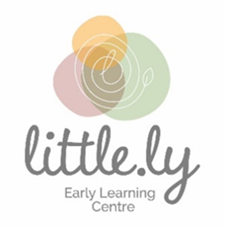 |
Little.ly Early Learning Centre, a simulated childcare centre. Access information and policy and procedure documents associated with Little.ly. This can be done by logging in to the Educator Hub on Little.ly's website with the following credentials:
|
- CR1 Interactions with Children and Families – Policy and Procedure
- ML6 – Educational Program and Practice Policy and Procedure
- Indoor safety checklist
- Outdoor safety checklist
- CR2 Behaviour Support – Policy and Procedure
- ML10 Privacy and Confidentiality Policy
Practice
Privacy and Condfidentiality
Review the Little.ly Early Learning Centre confidentiality and privacy policy on the Little.Ly website, then answer the following questions:
- What are the main points of the policy?
- How would you describe the links to legalisation, law and regulations?
- How will the service's confidentiality and privacy policies be implemented?
Identify the information, documentation or conversations from those case studies that may be sensitive to these policy requirements.
Ensure that you keep notes for future reference, as this information will support your assessments and professional practice.
Disclosure
Reading
Review the poster for responding to disclosures of abuse at the following link: Responding to Children and Young People’s Disclosures of Abuse’ from the Australia Institute of Family Studies (AIFS).
Every service will have a procedure to follow in the case of a child disclosing information regarding abuse. This will be either an individual disclosure policy or within the child protection policy. According to the AIFS, children are most likely to disclose abuse to a family member or a friend of a similar age, which could include a friend from their local children’s service.
Important
In an early childhood service, the staff are not equipped, nor is it within their job to counsel or investigate potential abuse. Staff should be supportive listeners who provide immediate comfort and support the child to be protected from further harm. A supportive listener can significantly impact the child seeking support, helping them recover from their trauma by finding trust and help in another adult. Investigations will be the role of a child protection worker.
If in doubt, always contact your local child protection office to request their advice on the next steps.
National Quality Standard 2.2 informs on areas of child protection. Therefore, you should assess protocols and practices relevant to protecting children at all times.
Reading
Read more on disclosure guidance at the following links:
- Responding to Children and Young People’s Disclosures of Abuse from the AIFS.
- Report Child Abuse in Early Childhood from Department of Education and Training (Vic).
- Reporting Child Abuse and Neglect: Information for Service Providers from AIFS.
- Responding to Incidents, Disclosures and Suspicions of Child Abuse from Department of Education and Training (Vic).
Practice
Disclosure Procedure
Complete the following table in the worksheet, indicating the steps to follow in the case of disclosure and the state/territory legislation and National Regulations relevant to disclosure and abuse in children’s services.
Download the document here.
Ensure that you keep notes for future reference, as this information will support your assessments and professional practice.
